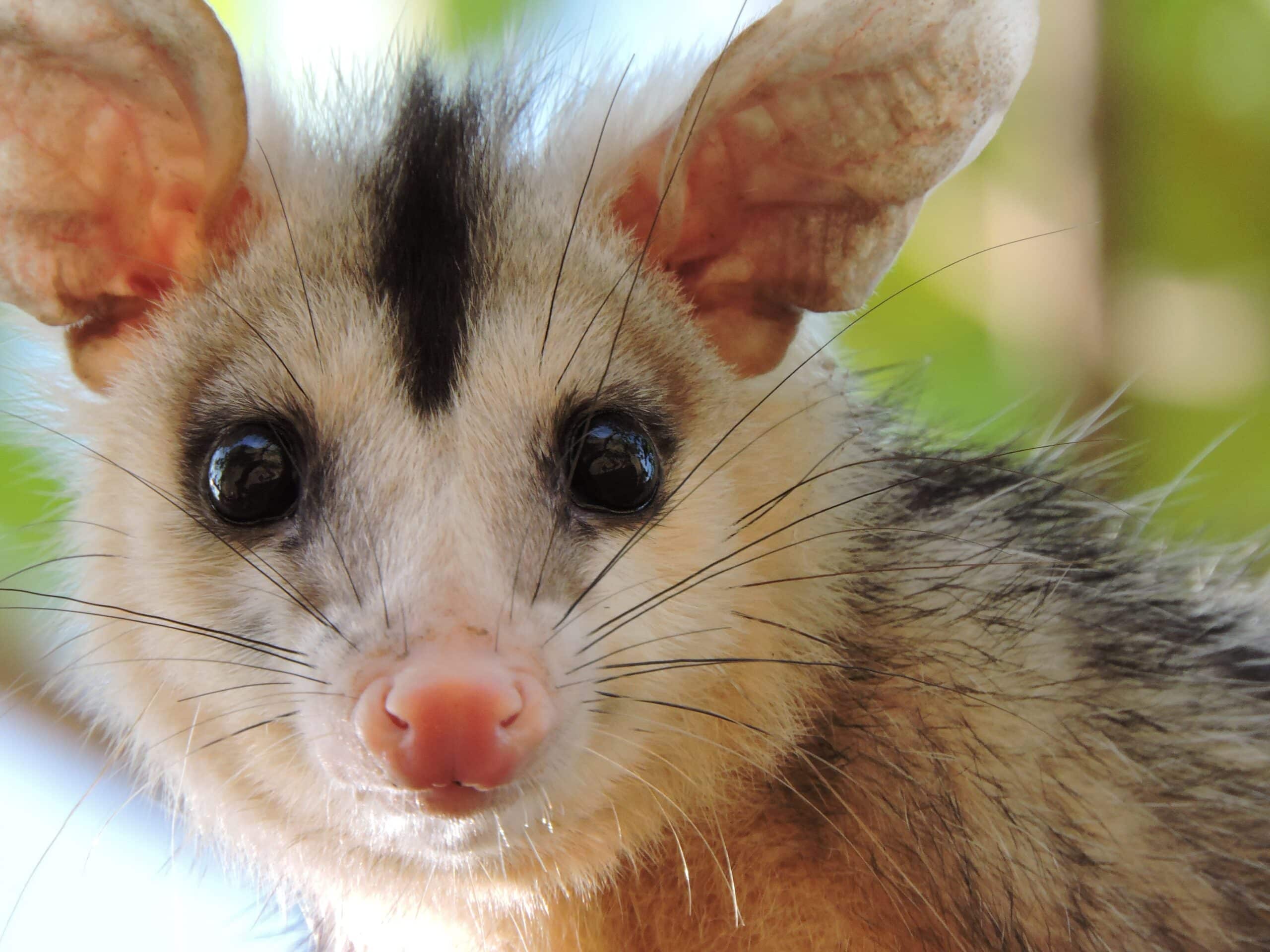
Sloths are unique animals on Earth due to their slow movements, adaptations, and life in the treetops of tropical rainforests. From two-toed to three-toed sloths, it is pretty easy to distinguish which. Despite their slow speed on land, sloths move quickly up in the trees and can right themselves if they fall out. They rely heavily on their sharp claws for climbing and grasping onto branches as they navigate through their environment.
Within the sloth, the family tree is six living species of these animals. They have been around since the time of the dinosaurs, over 64 million years ago. They have since adapted perfectly to living in tropical rainforest ecosystems, although they live as far north as Costa Rica. Life in a treetop also means that these creatures rely heavily on camouflage for protection from predators. With a diet consisting primarily of leaves, buds, fruit, and twigs, they need an efficient way to break down this challenging food source for nutrition intake—enter symbiotic bacteria that live inside their unique stomachs!
These animals spend approximately 90% of their lives up in trees—observing their surroundings or simply sleeping throughout the day –and only return down to earth once per week or so out of necessity, such as mating or seeking new food sources, making them expert climbers and passive observers within an ecosystem.
Physical Characteristics
Sloths are one of the unique animals on the planet. They have a variety of physical characteristics that set them apart from other species. Specifically, they are known for their slow-moving nature, as they can take up to an entire minute to move just a few feet.
Let’s take a closer look at the physical characteristics of sloths:
- They possess an incredibly long neck and legs and curved claws that they use to hang onto branches and other objects.
- Sloths have thick fur and a large tail, which helps them regulate their body temperature.
- They are also excellent swimmers, with powerful hind legs used for paddling through the water.
Diet
Sloths have a diet composed primarily of leaves, buds, twigs, and fruits. They have specialized hands and feet that easily grip branches and foliage, making it easy for them to browse the canopy. Although herbivorous, sloths can consume insects and small animals when possible. In captivity, sloths often eat bananas, a relatively rare occurrence in their natural habitat.
Sloths also eat algae that can cling to their fur, giving them an additional source of nutrition. The algae do not add much to their caloric intake; however, it provides essential vitamins and minerals and extra camouflage in the rainforest canopy. Sloths often spend up to twelve hours per day chewing on vegetation which helps them build strong jaw muscles and digest plant material more efficiently.
Size
Sloths are generally medium-sized mammals. Sloths can weigh between 4.4 to 17.6 pounds (2-8 kg), and adults measure around 22–29 inches (55–75 cm) long, depending on their species. The two-toed sloth is almost twice as giant as the three-toed version, but Hoffman’s two-toed sloth is smaller than the Brown-throated three-toed sloth.
The front limbs of both sloths can measure up to 30 inches (76 cm) long and have long, curved claws that they use to pull themselves along in the forest canopy and grasp tree branches when they climb or hang upside down in their sleeping position.
- Three-toed sloths have a head and body length ranging from 15– 27 inches (40–70 cm).
- Meanwhile, the two-toe species measures 22.5 – 29 inches (56–74 cm).
Color
The appearance of a material can influence how it is used and perceived. Color is one of the most visible physical characteristics used to identify materials, and it significantly impacts how people perceive objects. Color can denote danger or, in some cases, evoke emotions. It can also indicate heat levels and create an appearance that separates one material from another.
For materials to be accurately categorized and identified, accurate color measurement must ensure that each material’s exact shade matches its intended purpose.
Color measurement includes precise spectrophotometric measurement techniques that measure light reflectance through spectral analysis of transmitted or reflected radiation and even neural network modeling. Using this data, the exact hue, brightness, chroma (intensity), and other color parameters can be identified with an accuracy below 0.2 delta E or less.
Speed
Sloths are some of the slowest animals on Earth and are known for their movement capabilities. Despite their sluggishness, sloths can surprise unsuspecting predators with jaw-dropping speed, especially when moving up trees. When it senses danger, a sloth can quickly scurry up and away from potential harm with remarkable agility.
On land and in water, however, sloths’ movements appear slow and sluggish; the animal’s pressurized limbs require more effort to move. Sloths typically reach speeds of 0.15 to 0.27 meters per second (0.50 to 0.90 kilometers per hour), but when sprinting, they will accelerate up to 1 meter per second (3.6 kilometers per hour). This burst of speed may not seem impressive compared to other animals’ running capabilities – after all, it would take a human over 27 minutes just to complete a single kilometer at that rate – but considering the context in which sloths have evolved, one m/s serves its purpose well: the ability to rapidly reach safety when needed at surprisingly high speeds!
Habitat
Sloths inhabit many environments, from tropical forests to cloud forests to city parks. While they are most commonly found in Central and South America, they can also be found in parts of the United States. Sloths are adapted to living in these regions because they have adapted to the various climates and can survive in a wide range of temperatures. Additionally, sloths have evolved to be highly agile climbers, able to traverse the branches of their forests easily.
Let’s take a closer look at the sloth’s habitat:
Natural Habitats
Sloths are arboreal, meaning they live in tree canopies. They inhabit tropical forests of Central and South America, where they spend most of their lives in the treetops and rarely come to the ground. Wildlife experts believe most sloths are distributed evenly throughout Central and South America, ranging from Costa Rica to Argentina and Brazil.
Due to a reliance on trees, it is estimated that 60% or more of the original sloth habitat has been lost due to deforestation and other human activities. As a result, populations of pygmy three-toed sloths living on ‘Sloth Island’ off the coast of Panama have become critically endangered. Despite this decline in population numbers, sloths are doing reasonably well throughout their remaining range.
To survive in tropical forests, sloths must abide by specific environmental conditions such as temperature, humidity levels, and access to food sources. They often prefer tall canopy trees with thick foliage that provide plenty of shelter and protection from predators; jaguars, wild cats, and harpy eagles are among the species that regularly hunt them on the ground. Sloths carefully construct nests near the top of tall trees with overlapping large branches; these make great resting places when they sleep during the day and safe havens while digesting food at night.
Man-Made Habitats
Sloths are native to South and Central America and spend their lives in tropical rainforests, cloud forests, and dry forests. As these habitats dwindle due to deforestation, climate change, and other human activities, some species of sloths need help finding suitable living spaces. To help these animals thrive, many conservation efforts are underway to create artificial habitats for them.
Sloth habitat needs to be built in an area that avoids drastic weather fluctuations, land-use changes, and other potential threats like fire or poaching. A variety of different solutions have been explored when creating new homes for sloths, such as:
- Fence enclosures that keep the animals safe from poachers or predators.
- Corridors that add passageways for the slow-moving animals so that they can travel in between their preferred habitats.
Other strategies focus on restoring natural habitats by planting trees and other vegetation so that sloths have a network of food sources and places to live with minimal disruption from humans. Establishing areas of protected land also removes much risk associated with human activities such as logging or farming while providing refuge for vulnerable populations of plants which act as additional sources of food for the iconic three-toed sloths. Overall, these efforts provide many essential benefits for preserving the species while allowing them to survive in the wild under the best conditions.
Behavior
Sloths are arboreal mammals native to Central and South America that have a reputation for slow movements. Still, they have a wide range of behaviors demonstrating their intelligence and problem-solving capabilities. Though they are often mistaken for lethargic animals, sloths are highly active creatures that can display different behaviors in different environments.
Let’s take a closer look at some of these behaviors:
Social Interactions
Sloths are social animals and can be found in groups called pods. They keep their youth longer than most mammals, exclusively living with their mothers until around three years of age. During this time, juvenile sloths learn essential skills necessary to survive in the rainforest. Socialization can also happen between sloths of different pods; they often accept each other’s presence without any noticeable aggression and sometimes even touch noses or rub one another with their hands.
Sloths also have an unexpected life partner—the bird that feeds on the tick that takes residence on its face, neck, and fur! Sloth moths also live on the sloth’s skin, providing nutrients for the bird that feeds off them. This is a mutualistic relationship where both species benefit from being close together. The bird cleans off parasites from its fur while obtaining nutrients from the moth that lives there. This partnership is also critical for efficient digestion; only half of what a sloth eats daily is digested. The rest passes undigested through its digestive system during its week-long process. The energy gained from eating moths remains unprocessed until a bird eats it!
Reproduction
Sloths are solitary creatures and prefer to be on their own for the majority of the time. For reproduction, however, sloths may come together seasonally. Mating typically occurs for two to four weeks during the wet season, though it can vary based on region and climate.
Female sloths are sexually mature at around three years old, while males only reach maturity after four years. Now let’s examine actual reproduction.
- The gestation period for sloths is typically six months, with many pregnancies ending in single births, though twins can occur occasionally.
- Baby sloths are born with a complete set of fur, but they cannot yet cling onto their parents or branches – they will develop this skill in time!
- Typically, infant sloths stay with their mothers until they reach one or two years old before becoming independent animals and starting their own lives – choosing trees to occupy within their range.
- Though they move slowly, these dynamic creatures have truly mastered the art of perseverance!
Grooming
Grooming is an important activity for sloths. They are closely related to the anteaters and possess long arms and nails for scratching their fur to remove dirt, parasites, and debris. Unlike most mammals, grooming does not replace eating or sleeping in a sloth’s diet as it does in other animals. Grooming activities are also crucial for social interactions between individuals as sloths move through their tree-tops habitat.
This grooming activity usually occurs during night hours when the ambient temperature is cooler, which helps reduce heat stress on the already slow-moving animal’s bioenergetics system. During grooming sessions, other individuals nearby can be seen observing each other while they clean themselves. This may serve as a means of forming alliances and bonds with their community members, given the solitary nature of these animals, who generally live alone except when breeding or observing each other in the trees above their habitat.
A unique behavior observed among wild sloths is mutual grooming, when two individuals groom each other’s faces. At the same time, they hang suspended on branches overhanging streams below them with all four legs stretched out, making contact with one another in an embrace-like manner lasting approximately nine minutes.
Conservation
Sloths are increasingly becoming threatened due to habitat loss and human disturbances. Conservation efforts are being undertaken to protect these slow-moving creatures. Conservation efforts can include habitat protection, public education, and reintroduction programs.
This section will discuss the various conservation efforts being made to protect sloths.
Threats to Sloth Populations
Sloths are vulnerable to various threats, including habitat loss and degradation, collisions with vehicles, and hunting for meat. The primary threat to sloths is deforestation. As trees are cleared or degraded for development or logging operations, the animals’ habitats become fragmented, making it more difficult for them to find food, mates, and protection from predators.
Sloth populations can also be impacted by roads that block their movement across landscapes, while roadsides can bring increased access to humans looking to hunt or capture them as pets. In addition, land conversion activities such as urbanization have led to the loss of significant portions of forested habitats on both sides of the Panama Canal.
Other threats facing sloths include:
- Climate change and effects associated with rising temperatures like drought, wildfires, changes in vegetation composition, disease spread by insects (including ticks), and predators such as domestic cats that prey on baby sloths while still in their mothers’ pouches.
- Local communities sometimes hunt adult sloths for their meat or sell baby sloths in the pet trade.
These issues must be addressed to ensure a future where these captivating species survive and thrive in their native Central American rainforests.
Conservation Efforts
The sloth population is fragile, and many conservation efforts focus on educating the public and preventing mistreatment in captivity. Several organizations around the world are dedicated to sloths and their habitats. For example, the Sloth Conservation Foundation works to protect these animals through education and research programs that focus on species identification, population monitoring, health assessment, habitat protection, and more.
In Costa Rica, a large-scale research project called The International Sloth Center was established in 2017. This project is working towards improving the understanding of these creatures’ biology while developing genome strategies for their future conservation. Conservationists are also trying to preserve sloth habitats by reducing or eliminating threats posed by deforestation and illegal hunting practices.
Other organizations, such as The Sloth Appreciation Society in London, fund field trips for scientists to study the animals in different countries worldwide and work with local communities to raise awareness of sloths’ struggles for survival. In other parts of Central America, like Colombia, Mexico, and Panama, there are animal sanctuaries where rescued baby sloths can be released when they reach an appropriate age.
Sloths’ slow movements may make them prime victims of predators or climate change, so coordinated conservation efforts are critical. When researchers take steps to map out their habitats and numbers accurately, we can better understand how best to protect these species from human encroachment or environmental disruption threats. Suppose we can help educate people on wildlife protection guidelines while forming sustainable practices that enable humans and wildlife to thrive sustainably. In that case, a brighter future awaits us all!
Conclusion
To sum up, sloths are amazing animals. Despite their slow movements and lack of energy, they have many fascinating adaptations that make them incredibly resilient. Despite living in the trees in the humid rainforest, sloths rarely have to come down from the trees to drink water as they get most of their hydration from juicy vegetation. They have also developed a unique defense strategy to avoid potential predators and remain safe in their treetop homes.
Sloths are fascinating and unique creatures that deserve our attention, admiration, and respect!
Frequently Asked Questions
Q1: What are sloths known for?
A1: Sloths are best known for their slow movements and ability to hang upside down from tree branches. Also, sloths are known for their unique adaptation to their environment and long claws, which help them grip the branches of their treetop homes.
Q2: How long do sloths live?
A2: Sloths usually live for between 10 and 20 years, depending on the species.
Q3: What do sloths eat?
A3: Sloths mostly eat leaves, buds, fruits, and flowers. They also occasionally eat insects, lizards, and small birds.





